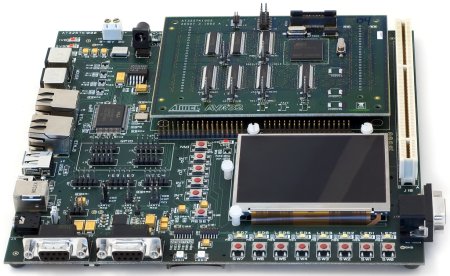High-efficiency RISC CPU gains Linux dev tools
Mar 6, 2007 — by LinuxDevices Staff — from the LinuxDevices Archive — 9 views An ultra-efficient new RISC-based processor architecture has gained its first Linux distribution support, according to representatives of the open source T2 SDE project. The project's cross-platform Linux build tools now support Atmel's AVR32 architecture, project representatives say.
An ultra-efficient new RISC-based processor architecture has gained its first Linux distribution support, according to representatives of the open source T2 SDE project. The project's cross-platform Linux build tools now support Atmel's AVR32 architecture, project representatives say.
Atmel launched the AVR32 architecture in April of last year, along with an AT32AP7000 SoC (system-on-chip) and STK1000 development board. The architecture was designed to perform well at low clock speeds, thanks to support for super-efficient, “DSP-like” instructions, and highly dense 16-bit code, in addition to extended 32-bit code. Atmel initially supplied its STK1000 board with a 2.6-series Linux kernel, and a choice of commercial or GNU compilers.

STK1000 dev board
(Click to enlarge)
The T2 SDE project maintains a cross-platform build system claimed capable of bootstrapping cross toolchains, thus simplifying ports to new architectures. The project supports some 16 architectures, not including AVR32.
AVR32 support was added to T2 SDE by Atmel, together with ExactCode, a German embedded systems and driver development house. ExactCode Founder Rene Rebe says that T2-generated binaries can play MP3 files in real-time at about 30 percent CPU usage, or Ogg/Vorbis at 50 percent, on Atmel's 140MHz STK1000 reference board. Alternatively, the board can decode VGA MPEG2 or QVGA MPEG4 files, with higher bitrates achievable with an optional Pixel Coprocessor (PiCo).
Availability
A version of T2 SDE that supports AVR32 appears to be available for download now, from the project website.
Lots more technical details about Atmel's AVR32 architecture and STK1000 reference board can be found in our earlier coverage, here.
This article was originally published on LinuxDevices.com and has been donated to the open source community by QuinStreet Inc. Please visit LinuxToday.com for up-to-date news and articles about Linux and open source.